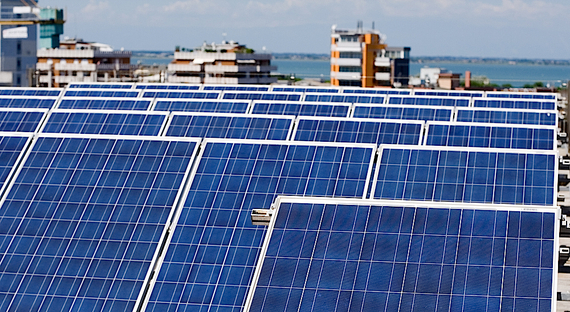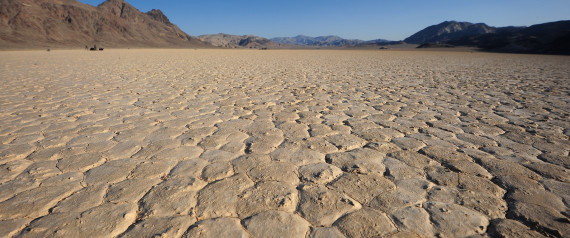Rising carbon emissions may lead to unprecedented "megadroughts" in the United States later this century, according to a recent NASA report. And these droughts could impact our lights as much as our lawns.
That's because powering computers, phones, lamps, and other appliances requires massive amounts of water. In fact, fossil fuel and nuclear power plants, which currently produce more than 80 percent of our electricity, use as much freshwater as the nation's farms.
Like car engines, fossil fuel and nuclear plants get extremely hot during operation. Without water to keep machinery cool, these plants must throttle back production -- or even shut down.
This Achilles heel has already jeopardized Americans' access to affordable, reliable energy. Drought conditions in the Southeast during 2008, for example, forced Tennessee Valley Authority to idle all three reactors at its Browns Ferry nuclear plant. When unexpected shutdowns like this occur, utilities often need to purchase expensive replacement power: passing high costs on to customers.
In 2011, Texas found itself in the midst of the worst one-year drought in its history. As extreme heat pushed demand for electricity to an all-time high, water -- needed to cool the state's coal, nuclear, and gas plants -- was in short supply. Officials warned of rolling blackouts, which never struck due to the development of wind farms. That summer, wind power provided as much as 18 percent of the state's electricity needs. Unlike Texas' coal plants, its wind turbines required no water, and without them, Texans may have found themselves in the dark.
Fortunately, water-efficient energy technologies are readily available. Wind and solar, the nation's fastest growing renewable energy sources, require far less water than fossil fuel or nuclear power plants. Solar panels, for example, which are being installed on rooftops across the country at a rate of one every 150 seconds, use virtually no water.

Another solution is to better manage demand for electricity. For much of the country, demand for power is highest during hot summer afternoons, when air conditioning is essential. These "peak periods" push the power system to the limit -- requiring backup power plants to fire up -- often at the same time drought conditions are most severe. As a result, extreme stress is placed on water supplies. Energy efficiency and managing demand through price signals, however, can reduce consumption during peak periods: lowering the risk of drought-related outages.
Expanded use of renewables and energy efficiency can help avoid drought-related power outages. And rapid scientific advances over the past few years have made these newer technologies cost-competitive with traditional sources. A recent study by the investment firm Lazard found the cost of solar energy to be as low as 5.6 cents a kilowatt-hour, and wind at 1.4 cents. Comparatively, coal came in as cheap as 6.6 cent a kilowatt-hour and natural gas at 6.1 cents. Even in the not-so-sunny state of Minnesota, solar has beat out natural gas on price. Eliminating wasteful energy use, through greater energy efficiency and better demand management, is a no-brainer. The cheapest kilowatt-hour is the one not used.
More intense droughts, as predicted in the NASA report, will place even greater stress on water supplies in the coming decades. Decisions made today about how to generate electricity will either ease this tension -- or amplify it. Luckily, the solutions are clear.

